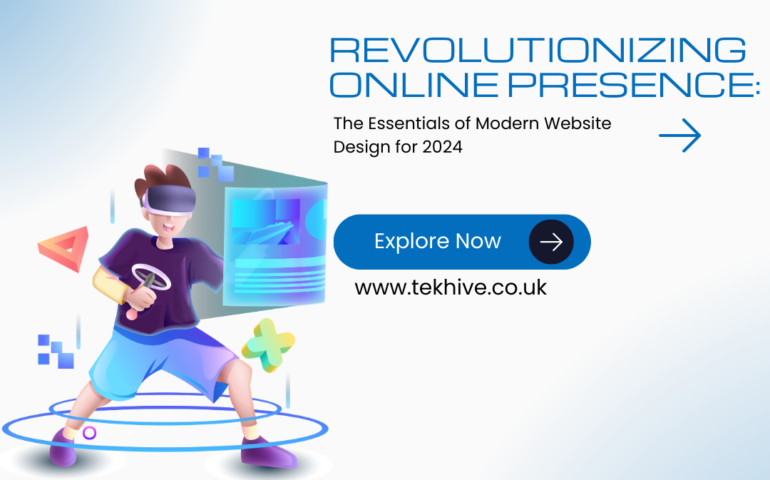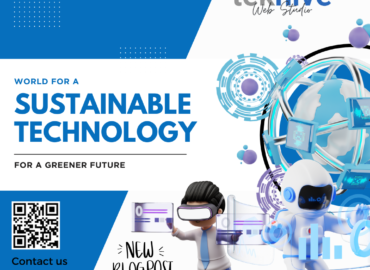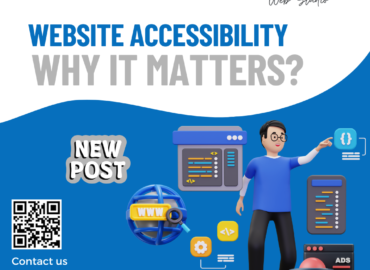
Modern Website Design
In today’s digital age, a well-designed website is not just an option but a necessity. Modern website design is crucial for businesses aiming to capture the attention of their target audience and provide a seamless user experience. As technology evolves, so do the trends and best practices in website design. This blog post delves into the latest trends in modern website design for 2024, offering insights and practical tips to help you create an impressive online presence.
Understanding Modern Website Design

What Defines Modern Website Design?
Modern website design refers to the principles and aesthetics that dominate current web design practices. It emphasizes clean, user-centric layouts that cater to diverse devices and screen sizes. The core attributes include minimalism, responsiveness, and intuitive navigation. With the rapid advancements in technology, modern website design continues to evolve, incorporating innovative features to enhance user experience.
The Importance of User Experience (UX)
One of the fundamental aspects of modern website design is user experience (UX). A well-designed website should be intuitive, easy to navigate, and visually appealing. UX design focuses on optimizing the user’s journey through your site, ensuring they find the information they need quickly and efficiently. This involves creating clear calls to action, streamlined navigation, and a visually engaging layout.
Key Trends in Modern Website Design for 2024
Minimalist Aesthetics
Minimalism remains a dominant trend in modern website design. By stripping away unnecessary elements, designers create a clean and focused experience that enhances usability. This approach not only makes websites look sleek but also ensures that visitors can easily find and interact with key content.
Key Elements of Minimalist Design:
- White Space: Ample white space improves readability and directs users’ attention to essential elements.
- Simple Color Palettes: Limited color schemes help maintain a cohesive look and feel.
- Bold Typography: Clear, legible fonts make text stand out without overwhelming the design.
Responsive Design
With the increasing use of mobile devices, responsive design has become a critical component of modern website design. Responsive design ensures that your website functions seamlessly across various devices and screen sizes. This approach improves user experience and can positively impact your site’s search engine rankings.
Benefits of Responsive Design:
- Improved User Experience: A responsive website adapts to different screen sizes, providing a consistent experience across devices.
- Increased Accessibility: Users can access your site from any device, making it more inclusive.
- Better SEO Performance: Search engines favor responsive sites, which can lead to higher rankings.
Dynamic Visuals and Interactive Elements
Incorporating dynamic visuals and interactive elements can significantly enhance user engagement. Modern websites often feature animations, video backgrounds, and interactive infographics to captivate visitors and encourage them to explore further.
Popular Interactive Elements:
- Hover Effects: These effects provide visual feedback when users interact with elements on your site.
- Scroll Animations: Animations that trigger as users scroll through the page add an element of surprise and delight.
- Interactive Infographics: These provide a more engaging way to present complex information.
Best Practices for Modern Website Design
Prioritize Speed and Performance
A fast-loading website is crucial for retaining visitors and improving search engine rankings. Optimize your site’s performance by compressing images, leveraging browser caching, and minimizing the use of heavy scripts.
Tips for Improving Site Speed:
- Image Optimization: Use tools to compress images without sacrificing quality.
- Code Minification: Reduce the size of your CSS, JavaScript, and HTML files.
- Content Delivery Network (CDN): Distribute your content across multiple servers to speed up load times.
Ensure Accessibility
Designing with accessibility in mind ensures that your website can be used by people with various disabilities. Implement features such as alt text for images, keyboard navigation, and sufficient color contrast to make your site more inclusive.
Accessibility Features to Implement:
- Alt Text for Images: Provide descriptive text for all images to aid screen readers.
- Keyboard Navigation: Ensure that users can navigate your site using a keyboard.
- Color Contrast: Use contrasting colors to improve readability for users with visual impairments.
Future Predictions for Modern Website Design
AI and Machine Learning
Artificial intelligence (AI) and machine learning are poised to revolutionize website design. These technologies can provide personalized user experiences, automate content creation, and enhance design efficiency.
Potential AI Applications:
- Personalized Content: AI can analyze user behavior to deliver tailored content.
- Design Automation: Machine learning algorithms can automate design processes, such as layout adjustments and color schemes.
Enhanced Virtual and Augmented Reality
Virtual reality (VR) and augmented reality (AR) are gaining traction in modern website design. These technologies offer immersive experiences that can engage users in new and exciting ways.
Examples of VR and AR Integration:

- Virtual Tours: Allow users to explore spaces or products in a virtual environment.
- AR Features: Enable users to visualize products in their own environment using their device’s camera.
Implementing Modern Website Design
Modern website designs is an ever-evolving field that requires staying current with trends and best practices. By focusing on minimalism, responsive design, and interactive elements, you can create a website that not only looks great but also provides a superior user experience. As technology advances, embracing innovations like AI and VR will further enhance your website’s effectiveness and engagement.





